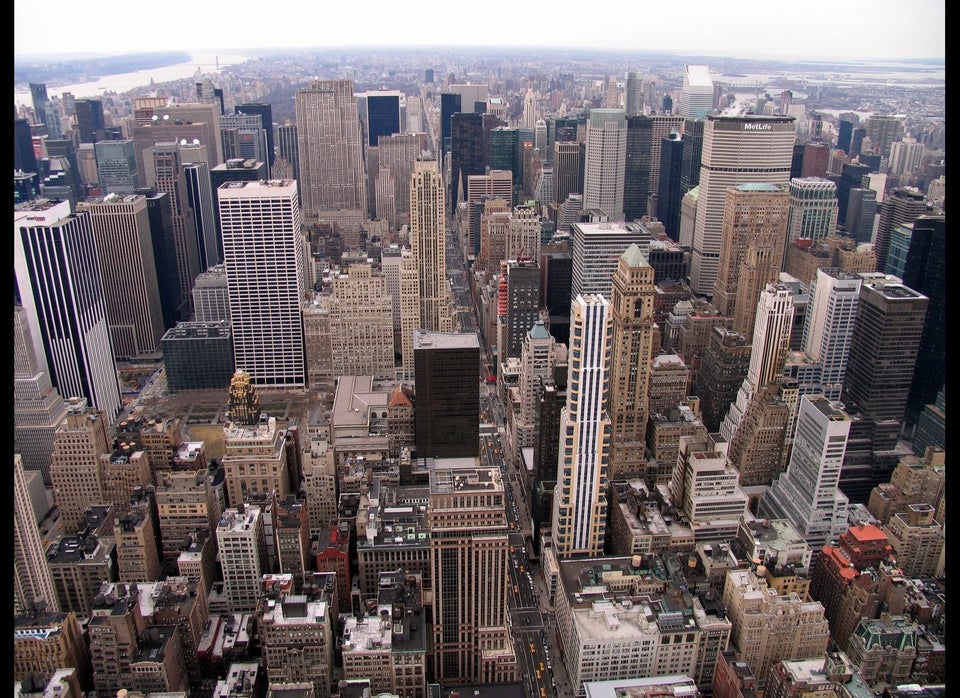
In the decade since 9/11, American Muslims and mosques have come under a close lens, from congressional hearings on radicalization to campaigns against mosque construction projects and anti-Sharia legislation proposals in dozens of states.
Despite such difficulties, a comprehensive survey of American mosque leaders released Wednesday reveals that the number of mosques in the country has grown tremendously, with more than 900 new centers being established since 2000. Another finding from the survey reveals that compared to the turn of the millennium, fewer Muslims see America as "hostile" to Islam today.
The nation's largest Islamic groups, including the Council on American-Islamic Relations, the Islamic Society of North America and the Islamic Circle of America released the survey that asked hundreds of mosque leaders about the demographics and theological and political leanings of their congregation.
Researchers counted 2,106 mosques in the United States, mostly located in or around big cities, with New York state and California alone having 503 mosques. As more Americans have moved to the suburbs, so has the growth of new mosques. While many mosques have historically been established by South Asian immigrants, the study found that newer immigrant groups such as Somalis, Iraqis, West Africans and Bosnians have began to establish their own mosques since 2000.
"The continued growth of the community is amazing," said Ihsan Bagby, a professor of Islamic studies at the University of Kentucky who was the primary researcher of the study. Bagby, who is Muslim, did similar surveys of mosques in 1994 and 2000. "It's remarkable the amount of mosques that have been built in the last 10 years. It's kind of counter-intuitive to factors working against them."
Bagby, who worked with researchers from Hartford Seminary and the Hartford Institute for Religion Research, counted Sunni and Shiite mosques, which represent the two main Islamic denominations; leaving out smaller groups, such as the Nation of Islam, Moorish Science Temple, Isma’ili and Ahmadiyya centers. Many Muslim groups, such as those on university campuses, do not have permanent spaces, so only those with a physical building or permanent room that they control were counted. Mosques also had to hold services on Fridays, the main Islamic congregational prayer day, to be counted.
More than 98 percent of mosque leaders, which includes imams or heads of operating boards, said in the survey that Muslims should be involved in American society, while 91 percent said that Muslims should be involved in politics. The survey also found that 87 percent of mosque leaders disagree that radicalism is increasing among young Muslims. Six percent agreed that it was increasing.
Researchers also asked about how Muslim leaders approach their religion. The majority -- 56 percent -- said they believe in a flexible interpretation of the Quran and the Sunnah (the way the Islamic prophet Muhammad practiced the religion) that isn't always literal and takes into account modern life.
On the more conservative end, 21 percent of mosque leaders said they look toward more traditional interpretations of Islam, and six percent said they are Salafi. Salafi is a conservative tradition that sees the early generations of Islam after the religion was established in the 7th century as the most authentic, and shares similarities with Wahhabism, another conservative tradition that is dominant Saudi Arabia.
Bagby's previous survey, conducted a year before 9/11, found that a majority of mosque leaders -- 54 percent -- thought America was hostile toward Islam. Today, a quarter of those surveyed said they feel that way.
The survey was done via phone in English with a sample of more than 500 mosques from across the country and based on self-reporting from mosque leaders. The margin of error was plus or minus 5 percent. It's the first of several surveys Bagby will release through the summer. The others will look at the role of women in mosques, the role of imam's at mosques, and educational and social programs offered at mosques.
The survey results are meant for a broad audience, but Bagby says he hopes Muslims will gain insight from them, especially the upcoming surveys.
"The ultimate goal is to bring some introspection and understanding so mosque leaders can improve mosque life," he said.
Bellow are some findings of "The American Mosque 2011: Basic Characteristics of the American Mosque, Attitudes of Mosque Leaders."
- The average number membership of an American mosque was 1,248 in 2011, which counts Muslims who at least pray for Eid-al-Fitr, one of two major holidays, at the mosque. That's down from 1,625 in 2000 and is likely because of a growth in the number of mosques.
- The total number of mosque participants or “mosqued Muslims” has increased from 2 million in 2000 to over 2.6 million Muslims in 2011. In his study, Bagby writes that "if there are 2.6 million Muslims who pray the Eid prayer, then the total Muslim population should be closer to estimates of up to 7 million." That contrasts with other surveys, such as a 2010 one by the Pew Forum on Religion and Public Life, which said there were 2.6 million Muslims in the country. A Pew report from last year said there were 2.75 million Muslims.
- Seventy-six percent of mosques were established since 1980.
- Shiite mosques are growing. Around 44 percent of all Shiite mosques were established in the 1990s. Approximately 7 percent of mosques identified themselves as Shiite and 37 percent of those are in the West, especially California. Most Shiites at American mosques are South Asians, Arabs and Iranians.
- A minority of mosques (3 percent) have just one ethnic group that attends. South Asians, Arab-Americans and African-Americans are dominant ethnic groups among mosque members, but significant numbers of Somalis, West Africans and Iraqis now worship at mosques nationwide.
- The number of mosques in urban areas is decreasing, while the number of mosques in suburban areas is increasing. In 2011, 28 percent of mosques were located in suburbs, up from 16 percent in 2000.
- The conversion rate per mosque has remained steady over the past two decades. In 2011, the average number of converts per mosque was 15.3. In 2000 the average was 16.3 converts per mosque.
- The average Friday prayer attendance was 353 compared to 292 in 2000.
See What States Have The Most And Least Mosques

